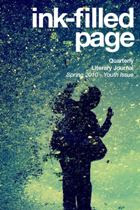Slash ambiguous terms and sentences by examining the meaning of slashed constructions. As our Chicago Manual of Style posits, the slash has been a traditional way of signifying immediate alternatives, used as shorthand for and or or. We have already shown the valid and convenient uses of this sign, but the slash as a darker side steeped in confusion.
Consider the following slashed constructions:
and/or editor/publisher is/was side ponytail/tube top dress code
Although these constructions have the straightforward appearance of legal language, they exhibit an underlying confusion when closely examined. The Copyeditor's Handbook provides an excellent summary of the situation:
Today, the sleight-of-hand of "a and/or b" is usually interpreted to mean "a or b or both," but often the intended meaning is simply "a or b," or even "a and b."
Instead of forcing your readers to take a stab at your intentions, tell them by substituting the correct word or phrase for the construction.
Both editor/publisher and is/was suffer from similar ambiguity. When and author is looking for an editor/publisher, are they trying to find a company to occupy both roles? Do they need one or the other? Are they looking to fill two different positions? The slashed construction of is/was does no better in presenting the reader with an accurate picture. Try to avoid the slashed construction when a few words could make your meaning clearer. Consider the following interpretations of the slashed conjunction:
Justin is/was Emily's best friend.Justin is or was Emily's best friend.(We are unsure of the status of the relationship.)Justin once was and now is Emily's best friend.(They grew apart for a while.)Justin continues to be Emily's friend.(They have remained close.)
Another cause of confusion can be found when joining multiple-word phrases in slashed conjunctions. When I read about the side ponytail/tube top dress code, the ponytail/tube is scanned as the conjunction. Chicago recommends using a thin space before and after the slash to signify the use of multiple-word phrases, but ambiguities remain. Do we have to have both a side ponytail and a tube top to meet dress code? Can we have one or the other?
The slash is a useful shorthand when dealing with alternatives, but be careful to not slip into confused statements. Strive toward clarity in your writing. When in doubt, use your words.





No comments:
Post a Comment